The very first cars in the history of the largest brands
On October 17, 1902, the first Cadillac car was released in Detroit. The car developed a maximum speed of about 48 kilometers per hour and cost $ 750. For an additional fee, you could get two additional passenger seats and a folding padded top. We decided to recall all the first models of the most famous brands.

In every person's life, the first, uncertain step is always also the most important. With cars exactly the same parsley. Without the first unsophisticated, licensed BMW, there would have been no space i8; if Enzo Ferrari had not decided to build a 125S speedster, neither F40 nor LaFerrari would have happened later, and without the first FIAT, we might still be walking. We offer to recall the first cars in the history of the largest brands of our time.
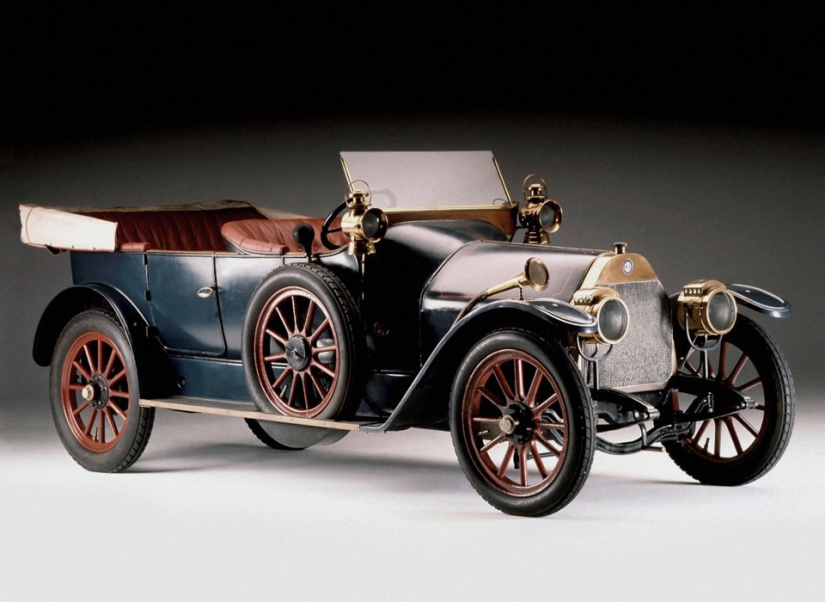
As you know, the name of the famous Milanese brand is half an abbreviation. Initially, A.L.F.A. is Anonimo Lombardo Fabbrica Automobili, that is, something like JSC "Automobile Plant from Lombardy". The second half of the name went to the brand from the entrepreneur Nicola Romeo, who bought A.L.F.A. in 1915.
The first car of the A.L.F.A. brand — model 24 h.p. — was equipped with an in-line "four" with a volume of 2.4 liters and, characteristically, 24 horsepower. Later, a four-liter engine was put on the same car, and the speed of such an "Alpha" was approaching 100 kilometers per hour. Not so sour for the beginning of the XX century.
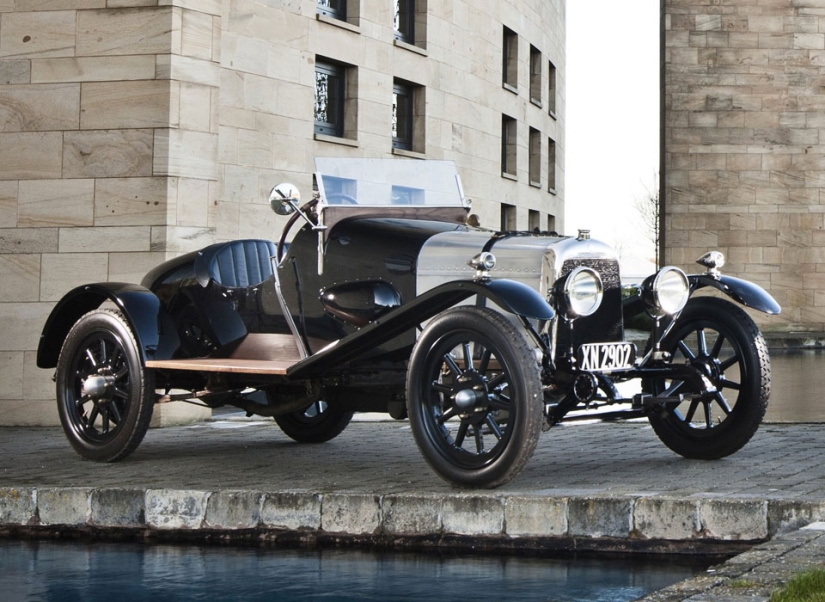
Unlike Rolls-Royce, only part of the name of this British brand is the surname of the founder. And the second part. In 1913, the successful London car dealer Lionel Martin won a high-speed climb to Aston Clinton Hill. In his joy, he came up with the name Aston Martin for future models of the company that still existed only in the project, crossing the name of the race and his own surname.
The first car of the brand was the Isotta Fraschini chassis with a 1.4-liter Coventry Simplex engine. Lionel very creatively named his car Coal Scuttle, that is, "coal bucket". But then the war started, so laughter, racing, and with them the release of cars had to be postponed for four years.
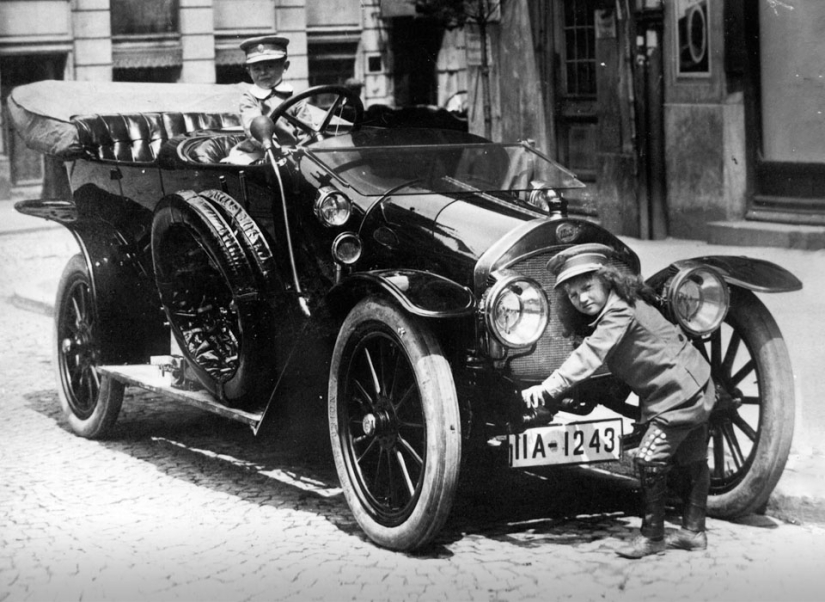
When August Horch quarreled with the board of directors of his own company Horch (they considered auto racing a waste of time and effort, and August was sure that motorsport was synonymous with the word "progress"), he slammed the door and organized a new company. In Latin, the word Audi means about the same thing as in German Horch — the verb "listen".
The first production car of the new company was the Audi Type A with a 2.6-liter 22-horsepower engine. Technically, the car largely repeated Horch 18/22, but none of this scandal did not inflate.
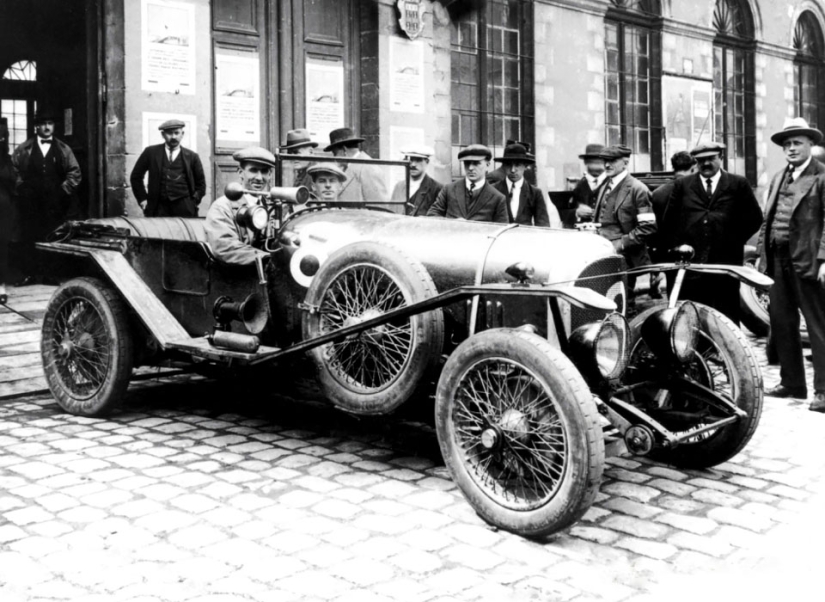
The first British car whose name indicated the volume of the engine, and not its power, was the Bentley 3—liter, created by Walter Bentley and his friend Frank Burgess, a former racer and designer of Humber.
Initially, Bentley Motors, based in London, offered customers only a chassis without a body. Moreover, at a price of over 1,000 pounds, the three-liter Bentley was reputed to be one of the most expensive on the market. The model was offered in three versions: Blue Label — standard, Red Label — a forced version with a compression ratio brought to 5.3:1, and Green label — a shortened chassis and the most powerful engine, which guaranteed a maximum speed of 160 kilometers per hour.

After the First World War, a well-known manufacturer of aircraft engines was forced to look for a new use for production facilities. At one time, BMW even produced kitchen furniture, then switched to motorcycles, and in 1928 bought the Dixi company, which was engaged in assembling licensed Austin Seven. So the first BMW car is a legal copy of the English subcompact.
The complex index of the original "behi" — 3/15 DA1 — stands for simply. The first figure is the taxable capacity, the second is the actual number of "horses". The letters DA are an abbreviation of the German Deutsche Ausführung, something like "Made in Germany".
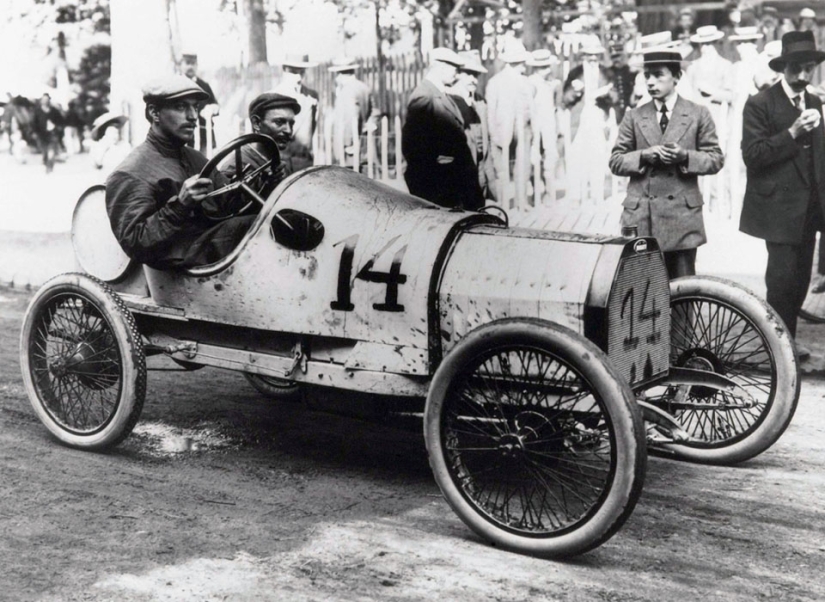
His first vehicle is an ATV with four (!) motors — Ettore Bugatti built back in 1899. But the first car decorated with the famous oval Bugatti logo was the Type 13.
The assembly of the model was set up in the workshops of the former dye factory in German (at least at that time) Molsayme, which became the home of the Italian engineer's company. Before the outbreak of the First World War, only four copies of a very light — only 300 kilograms — 30-strong model were collected. True fame patiently awaited Ettore and his creations only a few years later.
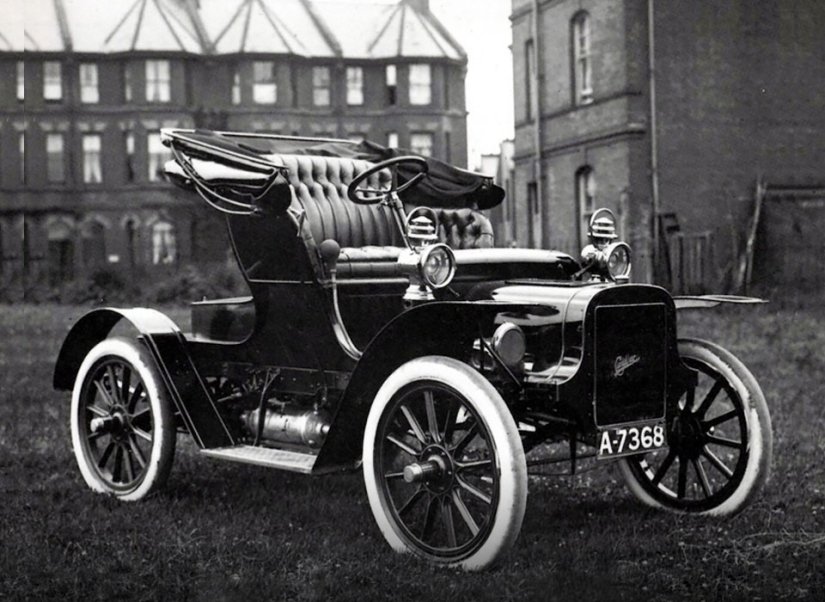
The first Cadillac passenger car was very similar to the first Ford passenger car. In general, there is more in common between these companies than one might assume. Actually, Cadillac cars began to be produced at the factory… Henry Ford Company. Until then, the same Henry Ford was in charge here, until he was expelled by investors. Henry Leland was appointed the new technical director of the company, and the company was renamed Cadillac Automobile Company. The first car of the future premium brand was built on the basis of developments left by Ford.
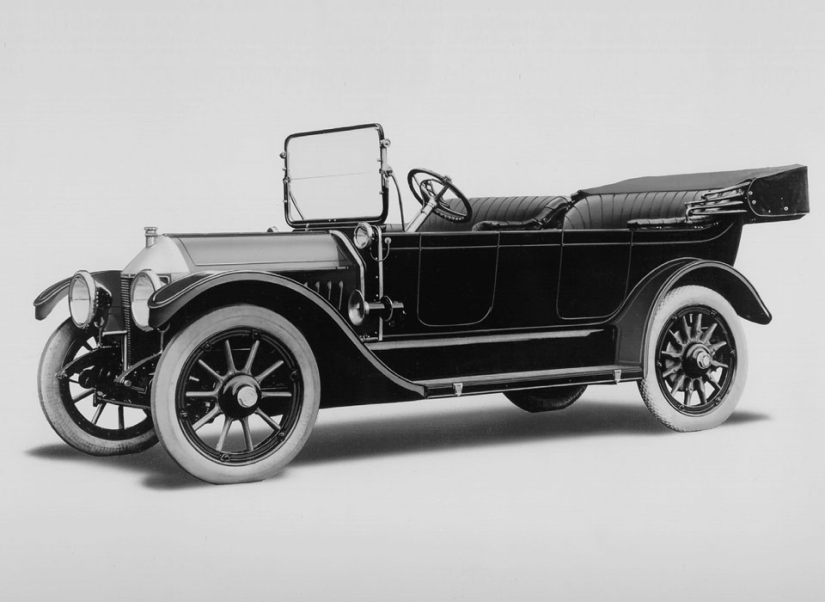
Misanderstanding. That's what happened in the relationship of the founders of the brand William Durand and Louis Chevrolet. The first — a clever businessman, a desperate businessman and a determined strategist — invited the second, a famous racer and designer, in order to build an inexpensive and popular car. But Chevrolet, obsessed with speed, not dollars, made an expensive and powerful Classic Six model with a six-cylinder engine and a price tag like a Cadillac. When Durand insisted on producing cheaper cars, Chevrolet, offended by the very fact that his name was used on some consumer goods, slammed the door.
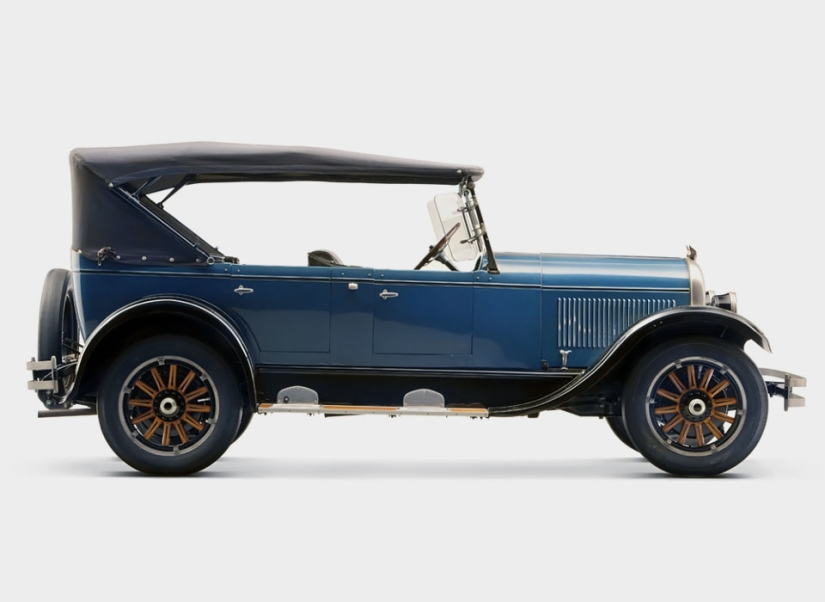
In the early 1920s, the former president of Buick, as well as the successful crisis manager of Willis and Maxwell, Walter Chrysler, discovered an empty niche in the market - he wanted to make a sufficiently powerful and prestigious car that would be produced in large numbers. Which, in turn, made it possible to make the price attractive. So the Chrysler B70 was born — beautiful and inexpensive, with a 3.3-liter "six" with 68 horsepower and hydraulic brakes on all wheels. Already in the first year, Chrysler managed to sell over 30 thousand "seventies", and a new star rose in the sky of Detroit.
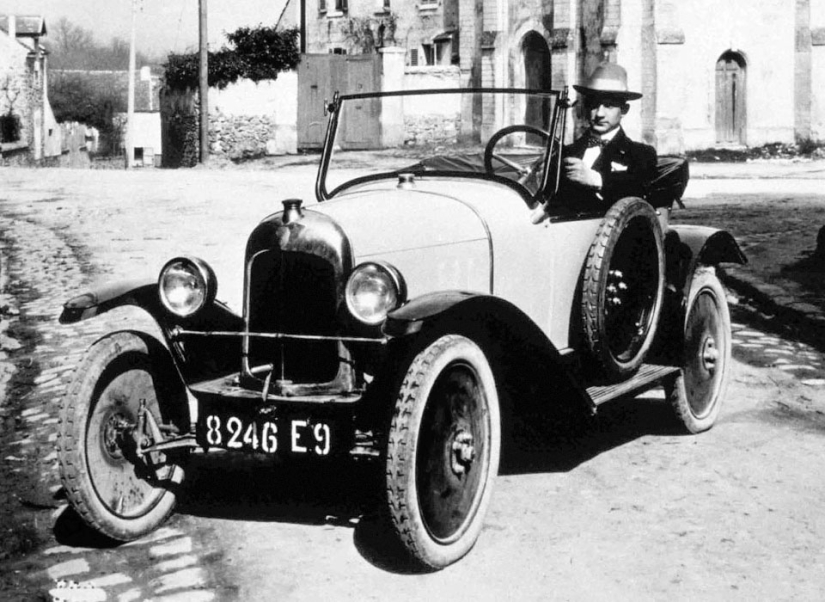
The end of the First World War deprived a major French manufacturer Andre Citroen, who had made a fortune on military orders, of his main earnings. Then, instead of shells, he decided to produce cars. Simple, reliable and cheap. Citroen Typ A 10CV, created by engineers Jules Salomon and Edmond Moye, equipped with an 18-horsepower 1.3-liter engine and accelerated to 65 kilometers per hour. The car cost no more than seven thousand francs — about three times less than the usual car price tags of that time. It is not surprising that in two months Citroen collected over 16 thousand orders and soon earned the fame of the French Henry Ford.
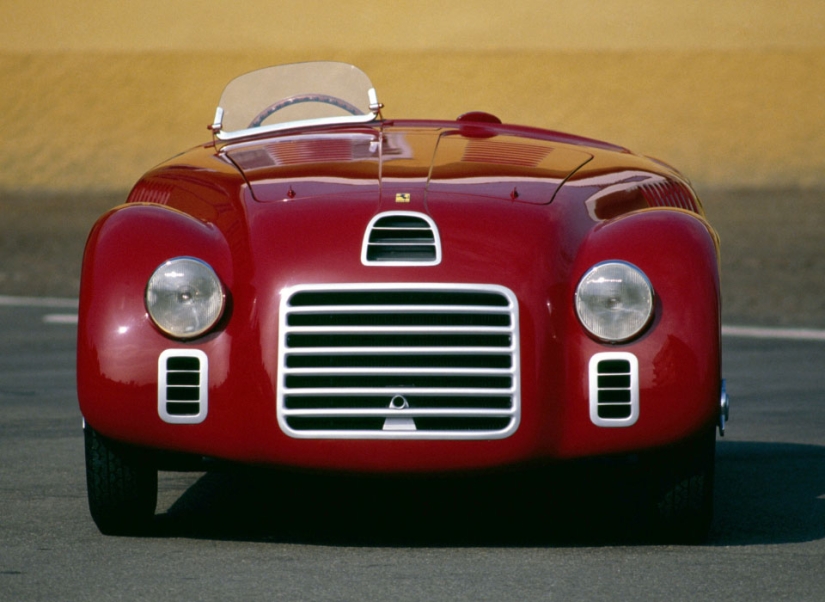
Enzo Ferrari loved racing and racing cars more than anything else in the world. And it is unlikely that he would ever have decided to produce ordinary cars, but ... the need forced. The cost of maintaining the "Scuderia" had to be paid, and Enzo decided to make cars for sale. In any case, it had to be sports, thoroughbred cars!
The first car that can be called a 100 percent Ferrari was the 125S two-seater speedster, designed by Gioacchino Colombo. The 1.5-liter 12-cylinder engine produced 118 horsepower, which, with a mass of 650 kilograms, allowed it to accelerate to 170 kilometers per hour. In the first six months, the new Ferrari won six victories in 14 starts, and in Maranello reached a trickle of wealthy clients.
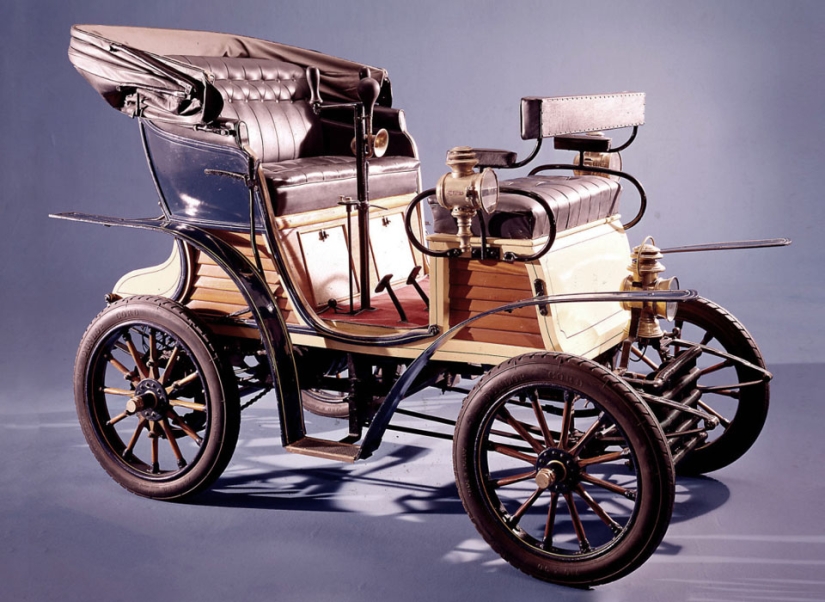
The "Factory of Italian cars from Turin", or simply FIAT, was founded on July 11, 1899, and towards the end of the year the first car of the brand saw the light. FIAT 3.5 hp with a two-cylinder 600 cc engine produced four horsepower, was equipped with a three-speed manual transmission, which did not have a reverse gear, and was offered with a standard bodywork of a carriage maker from Turin Marcello Alessio. The maximum speed of the first Fiat was 35 kilometers per hour.
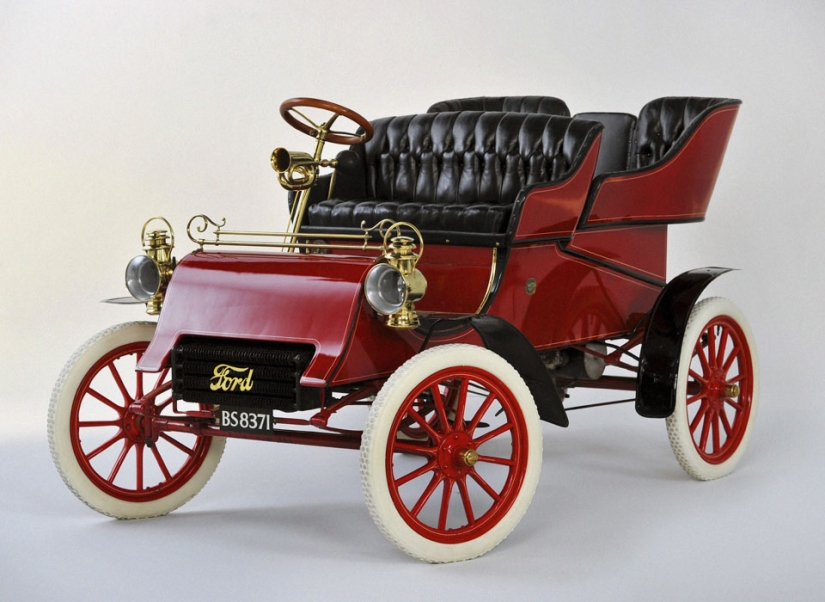
Ernst Pfennig, a dentist from Chicago, made history by becoming the first buyer of a Ford car. On July 15, 1903, a successful dentist purchased a Ford A laptop with an additional option in the form of a folding top. The purchase cost Mr. Pfennig $850. The Ford Model A itself, as we have already told, was very similar to the Cadillac Model A. The difference was in the engine: the Ford had a two-cylinder unit, and the Cadillac had a single-cylinder. That's probably why the Ford cost a hundred bucks more.
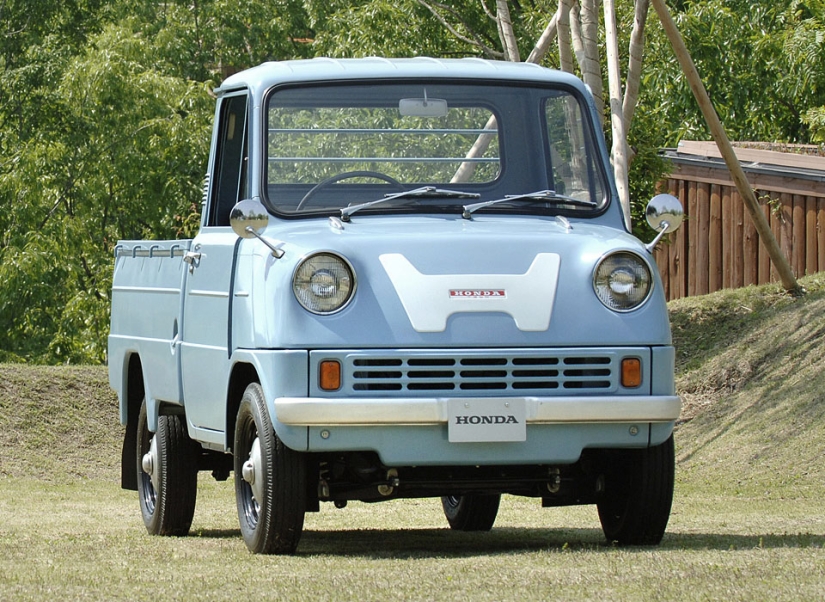
The first four-wheeled Honda is considered to be this cute little truck, although in spirit this cute pickup truck looked more like a sports motorcycle. What would you say, for example, about a tachometer marked up to 14,000 rpm?
In reality, the 356 cc four-cylinder two-shaft motor was spinning a little less, but only a little. The maximum 30 horsepower Honda T360 developed at 9000 rpm and accelerated to 62 kilometers per hour. Another rarity was the five-speed transmission.
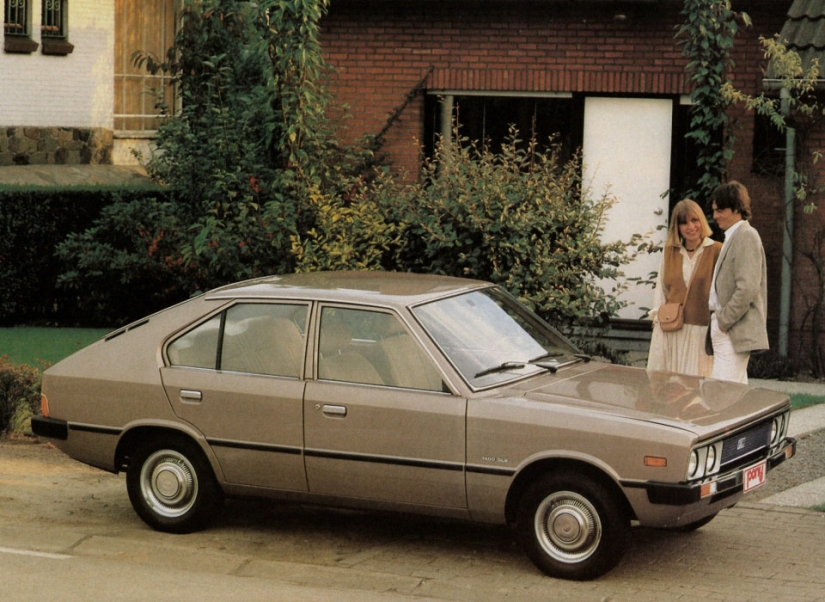
Hyundai, one of South Korea's largest industrial conglomerates, became interested in cars in the late 1960s. At first, it was limited to the licensed release of English models, but then the Koreans wanted more. Giorgetto Giugiaro developed the design, and British engineer George Turnbull assembled the first Hyundai from Mitsubishi components — engine, gearbox, rear axle, suspension — which received the modest name "Pony". Despite the unpretentious appearance and unpretentious characteristics, the car immediately became popular. Largely due to the very affordable price.
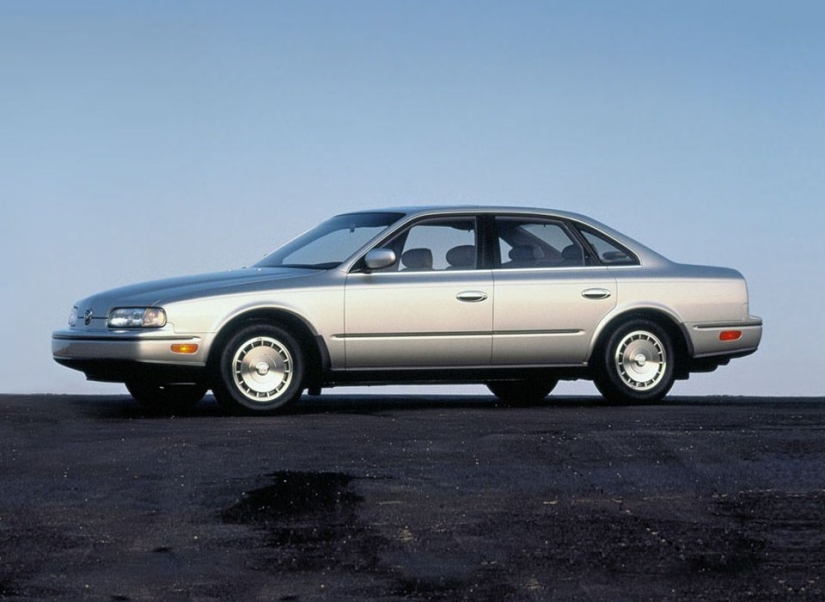
The first ever car of this Japanese premium brand was a slightly adapted version of the Nissan President in the body of the JHG50. Under the hood V8, 280 forces, "automatic", leather, all things… But, unlike the competing Lexus LS, which immediately took a brisk start, buyers reacted more calmly to the prestigious Infiniti sedan. Much calmer.
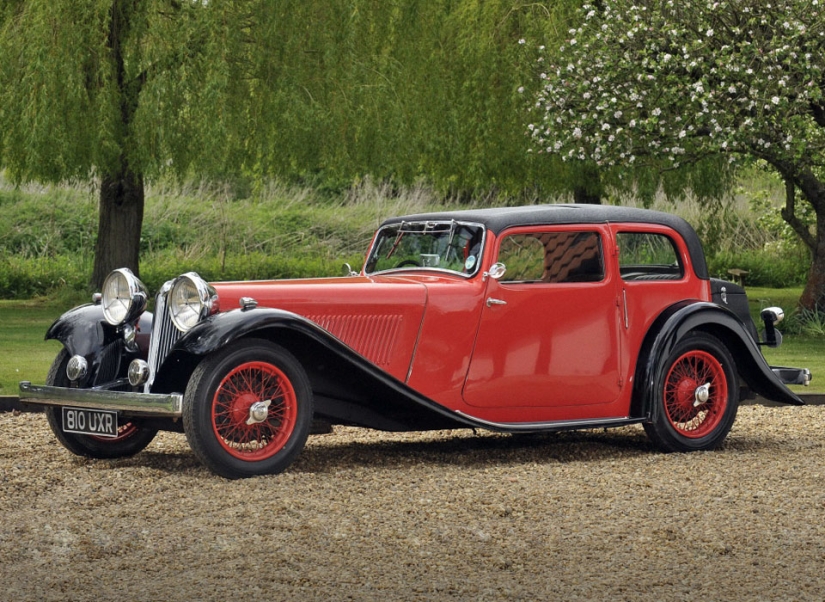
The foresight of Sir William Lyons can only be envied. In the early thirties, the founder of Sidecar Swallow, also known by the abbreviated name SS, patented the word Jaguar as a trademark just in case. At first, the "Jaguars" were called a series of Sidecar Swallow models: sedans, coupes, roadsters. But after the war, when the abbreviation SS had unpleasant associations, Sidecar Swallow turned into Jaguar.
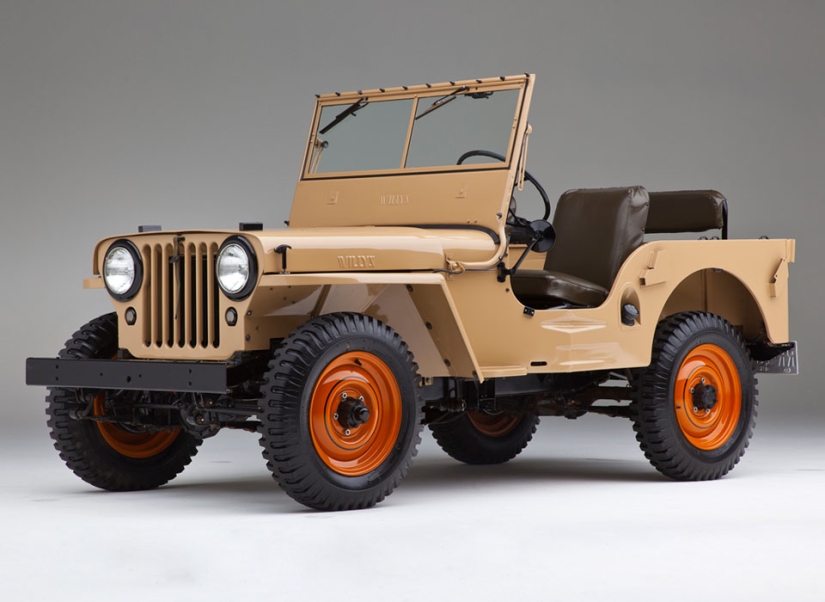
The Americans themselves prefer to keep the chronology of the "Jeep" since 1941. From the moment the multi—purpose military SUV Willys MA went into the series - better known in the world by the nickname "Jeep". However, for the first time this word was used as the official name of an all-terrain vehicle in 1945. A variant of the military vehicle intended for sale to private hands was named Willys CJ-2, and the letters CJ actually meant Civilian Jeep. Otherwise, the differences from the wartime hero were minimal: the same 2.2-liter engine, three-speed gearbox, familiar body outlines. From the new one — a radiator grille and a palette of colors more cheerful khaki.
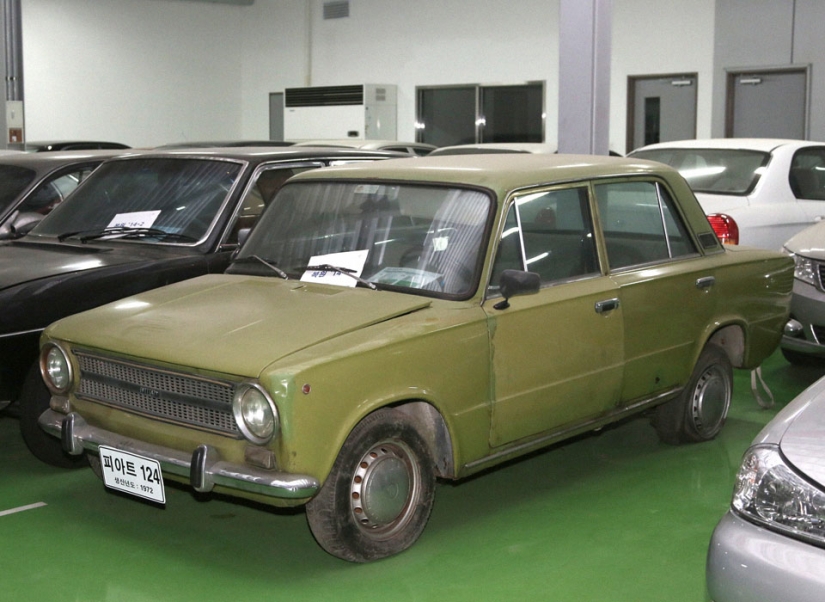
Surely you will ask: "Couldn't you find a better photo?" And we will answer: "Send all claims to the KIA brand museum." The picture is straight from there. It is difficult to say why the licensed Korean Fiat 124 is presented in the exposition of the historical repository in such a battered form, but the fact remains that the first Kia passenger car was the Zhigul, which is painfully familiar to us. Ugh, FIAT 124. Well, what about it? You can't get the words out of the song.
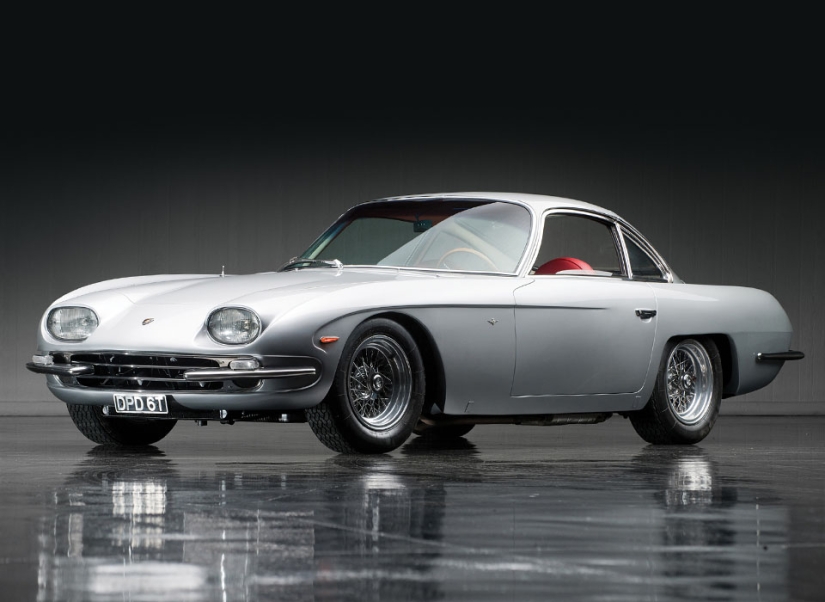
Having argued with Enzo Ferrari himself about the quality of sports cars, Ferruccio Lamborghini decided to prove that he himself is worth something. And proved it. Having hired a whole bunch of eminent engineers and designers, whose services cost a fortune, Ferruccio got a good result on the first attempt. The Lamborghini 350GT came out both beautiful and powerful, and not very capricious. Its 12-cylinder 280-horsepower engine allowed the car to accelerate to a solid 250 kilometers per hour.
Recent articles

In the estates of landlords under serfdom, servants of various profiles lived and worked. It was believed that the more servants a ...

Madonna, Johnny Depp, Annie Lorak, Lady Gaga, Olga Buzova, Philip Kirkorov, Leonardo DiCaprio, what unites these stars of domestic ...

If we talk about multi-faceted talented individuals, then we can safely cite Pavel Vlasov as an example. Although this name won't ...